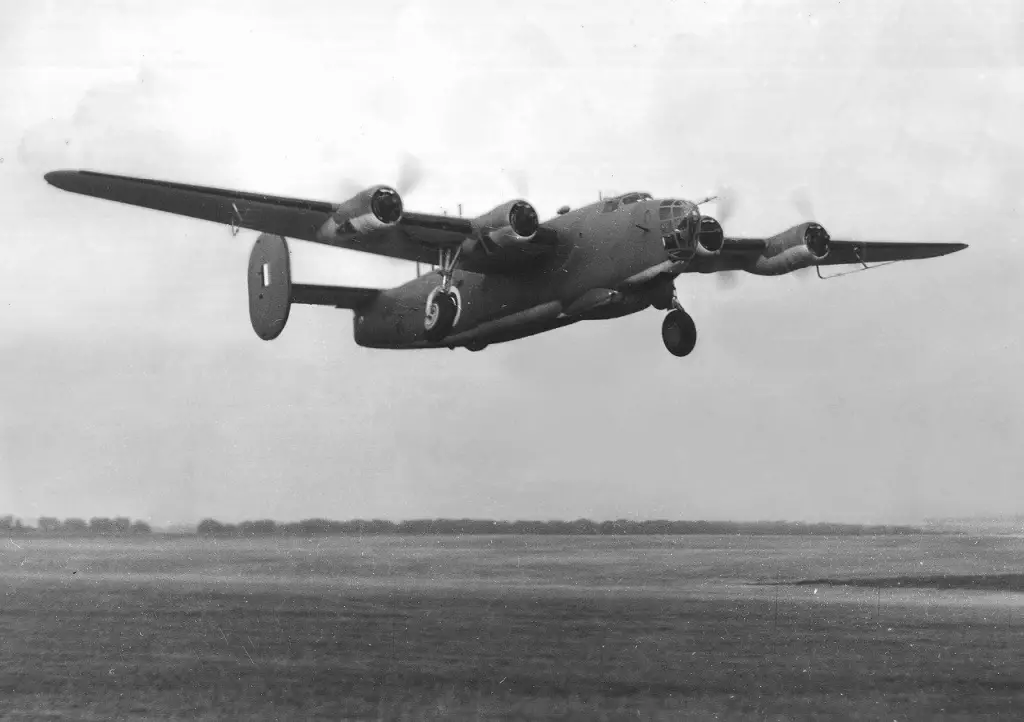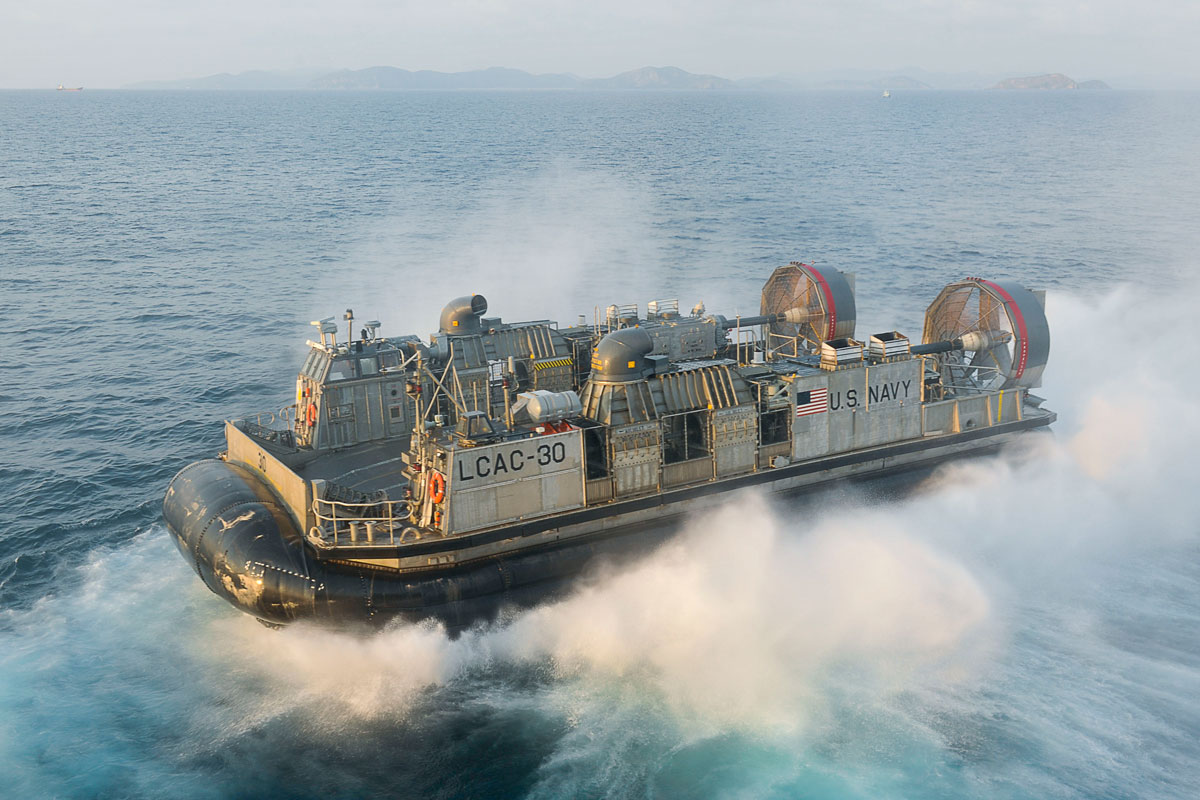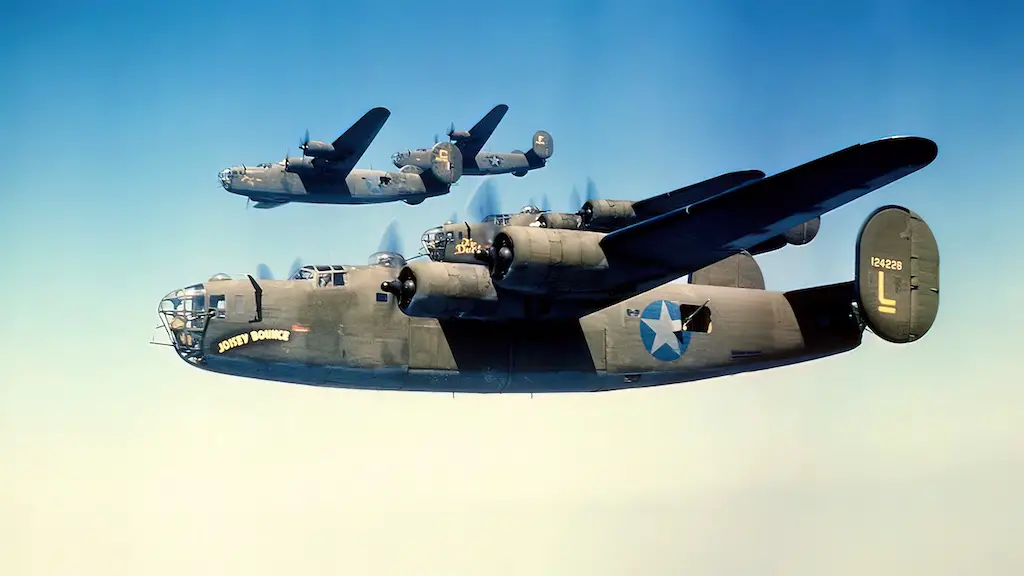
The B-24 Liberator: The Most Produced Bomber In History
Production
When thinking about THE bomber of WWII, the first aircraft that comes to mind isn’t the B-24; it’s probably the more iconic B-17 Flying fortress. This is certainly interesting considering that the B-24 Liberator isn’t just the most produced American military aircraft but the most produced bomber in history. A total of 18,188 of B-24 were built from 1940 to 1945, and the aircraft was used both by the USAF and the RAF. Along with the Flying fortress, the two were the most common American heavy bombers.
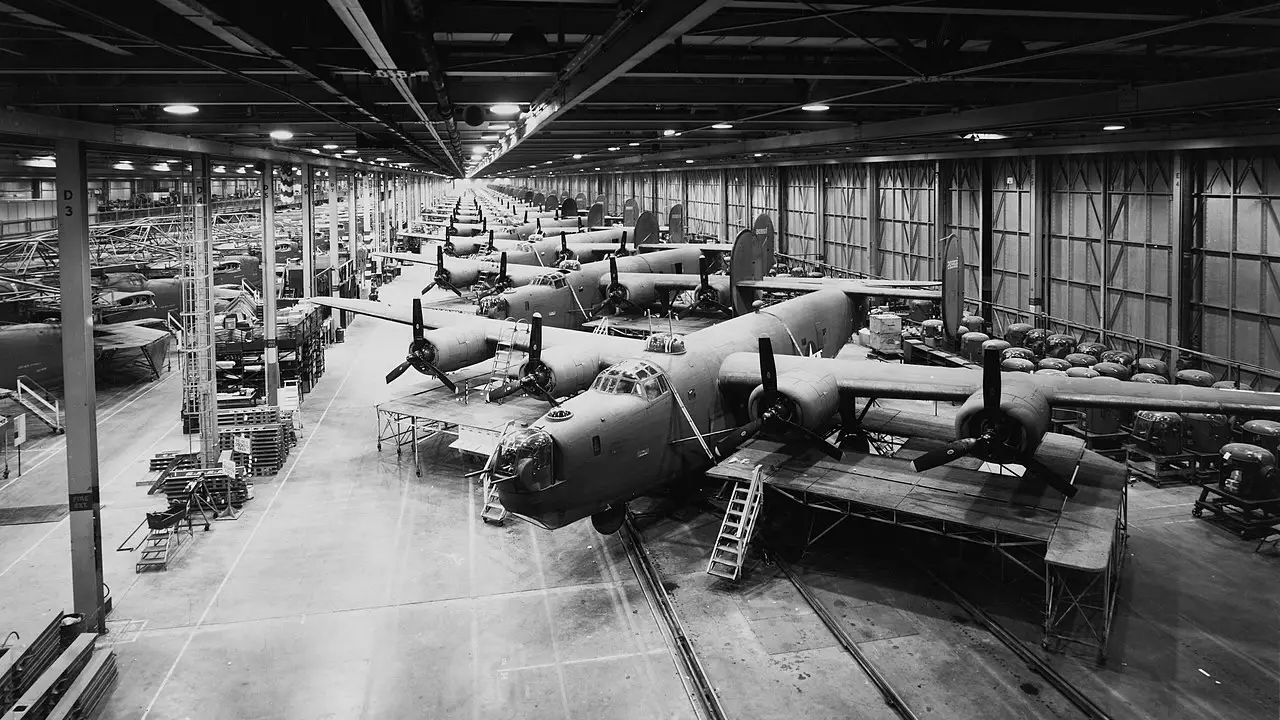
Design
It should be noted that the B-17 was never meant as a replacement for the B-24 as both were used to a comparable extent during the war. The B-24 was faster, could fly for longer ranges, and could carry a heavier payload. Reduced drag and having better aerodynamics were key components of the Liberator’s design. Two vertical stabilizers were installed at the rear, and the two bomb bay doors retracted into the fuselage when open, causing less air resistance.
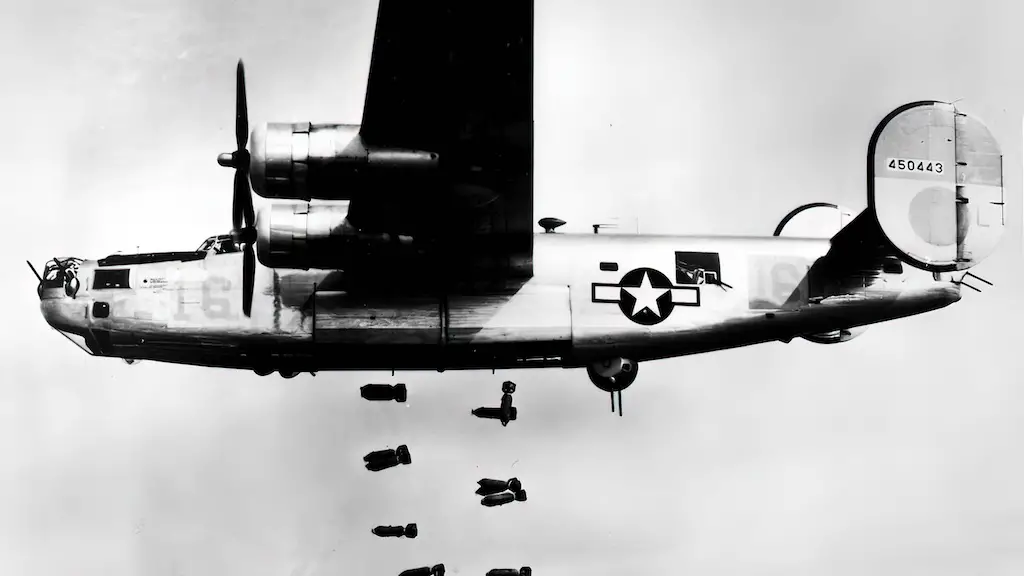 Ford-built B-24M-1-FO Liberator bomber of the United States 15th Air Force bombing railyards at Mühldorf, Germany on March 19 1945
Ford-built B-24M-1-FO Liberator bomber of the United States 15th Air Force bombing railyards at Mühldorf, Germany on March 19 1945The B-24 had a shoulder-mounted high aspect ratio Davis wing. This wing was highly efficient allowing a relatively high airspeed and long range. Compared to the B-17, it had a 6-foot larger wingspan but a lower wing area. This gave the B-24 a 35-percent higher wing loading. The relatively thick wing held the promise of increased tankage while delivering increased lift and speed, but it became unpleasant to fly when committed to heavier loadings as experienced at high altitude and in bad weather.
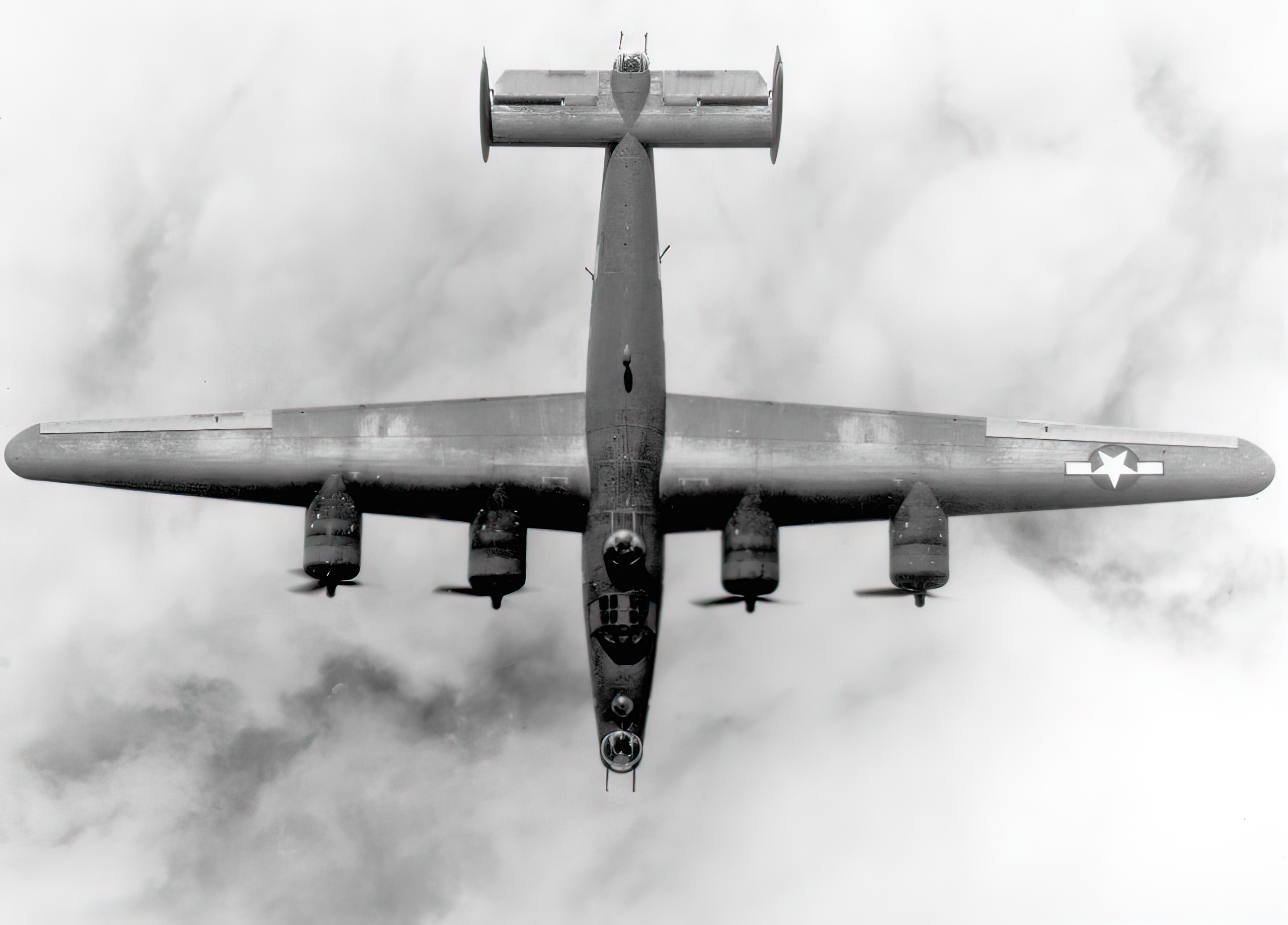 B-24 photographed from above, showing the Davis wing design
B-24 photographed from above, showing the Davis wing designThe Davis wing was also more susceptible to ice formation than contemporary designs, causing distortions of the aerofoil section and resulting in the loss of lift, with unpleasant experiences drawing such comments as, “The Davis wing won’t hold enough ice to chill your drink”. The wing was also more susceptible to damage than the B-17’s wing, making the aircraft less able to absorb battle damage.
The wing carried four supercharged Pratt & Whitney R-1830-35 Twin Wasp engines mounted in cowlings borrowed from the PBY Catalina (similar except for being oval in cross-section allowing for oil coolers mounted on each side of the engine) that turned 3-bladed variable-pitch propellers.
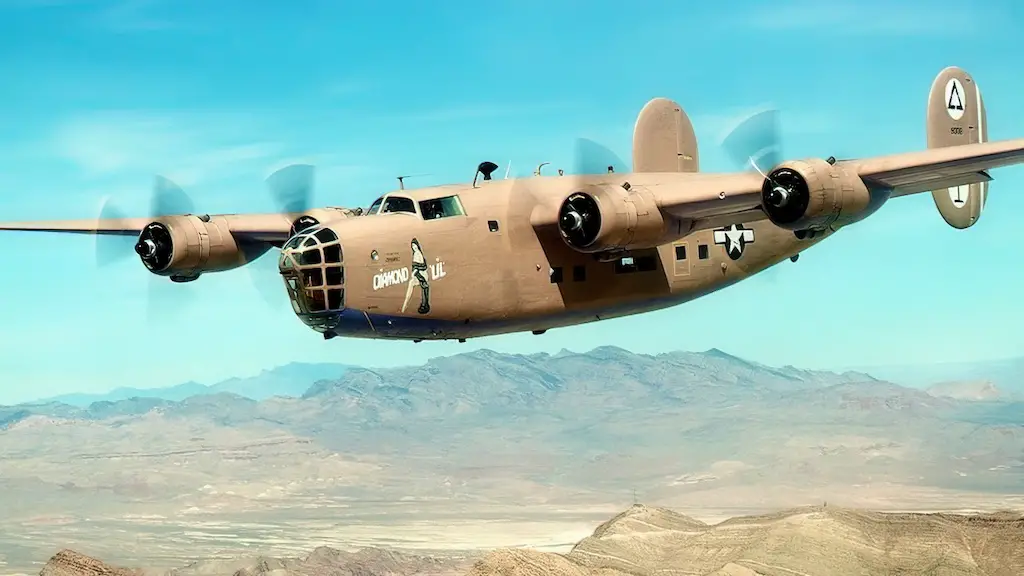 B-24 Liberator “Diamond Lil”
B-24 Liberator “Diamond Lil”The tailplane featured two large oval vertical stabilizers mounted at the ends of a rectangular horizontal stabilizer. As early as 1942, it was recognized that the Liberator’s handling and stability could be improved by the use of a single vertical fin. The single fin was tested by Ford on a single B-24ST variant and an experimental XB-24K: it was found to improve handling. However, all Liberators were produced with twin oval fins, with the exception of eight preproduction B-24N aircraft.
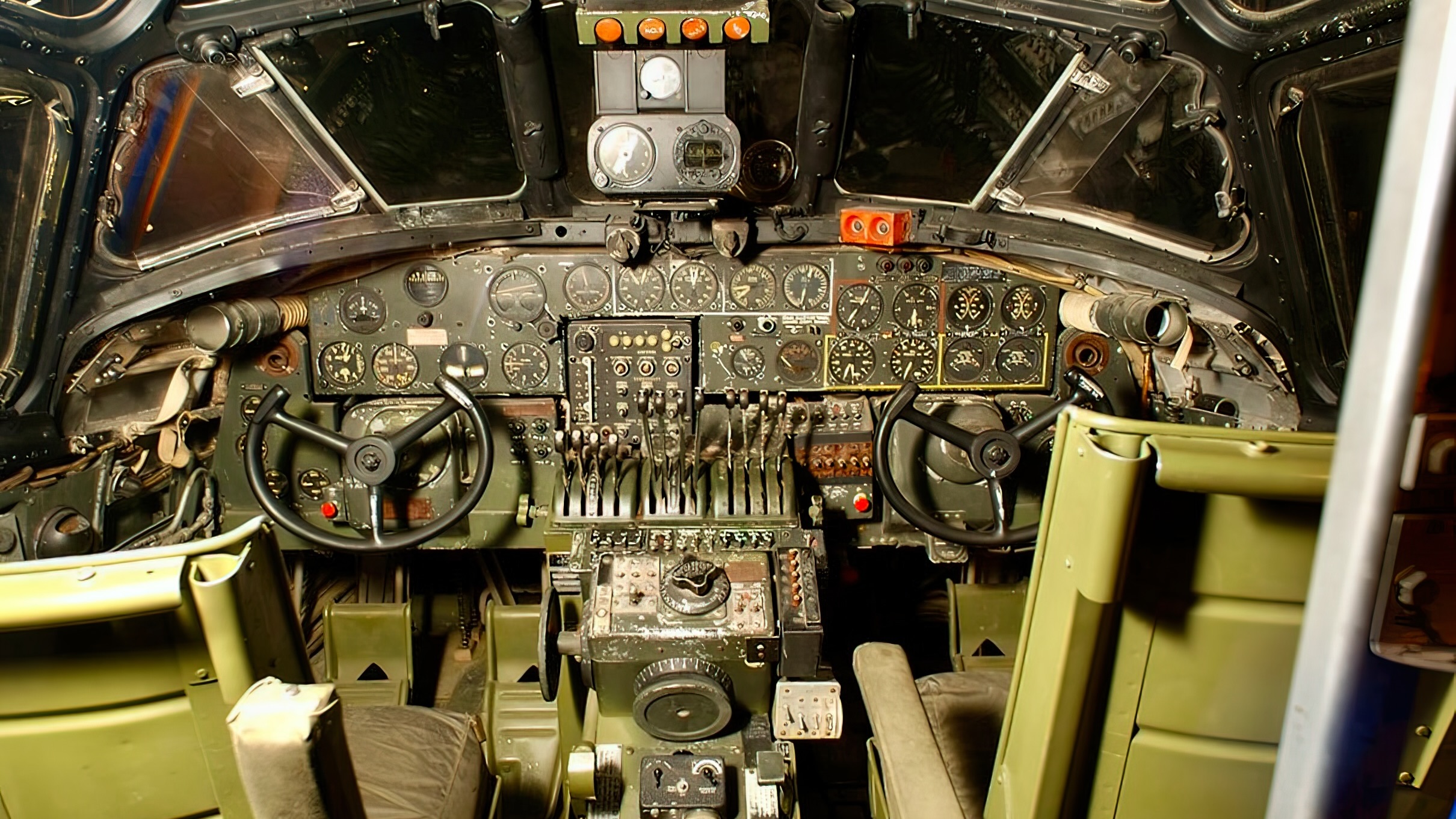 Consolidated B-24D Liberator Cockpit Source: USAF Museum
Consolidated B-24D Liberator Cockpit Source: USAF MuseumArmament
The defensive armament of the B-24 varied from transport variants, which were usually unarmed, to bombers armed with up to ten .50 caliber (12.7 mm) M2 Browning machine guns located in turrets and waist gun positions.
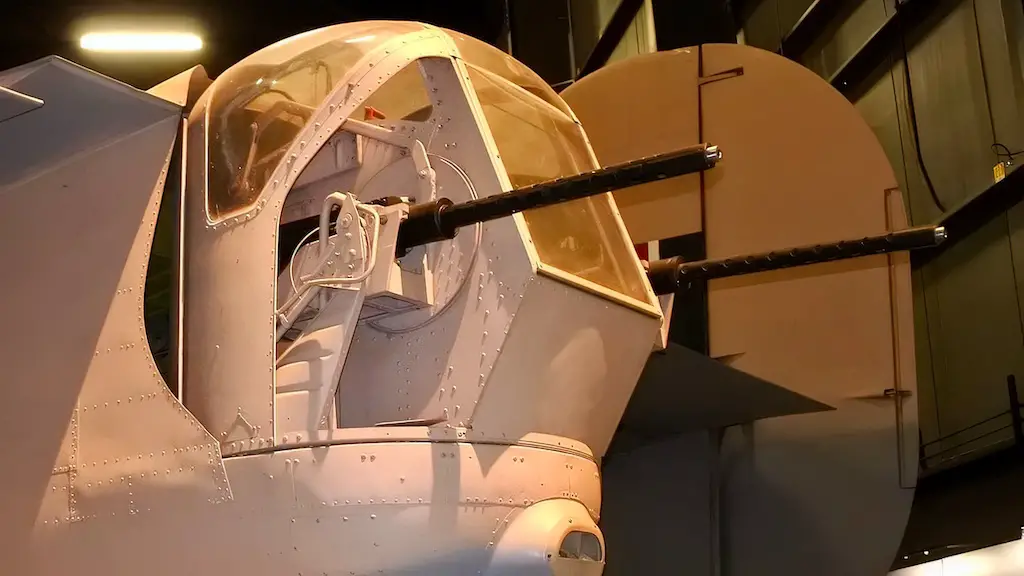 B-24D tail guns at the National Museum of the United States Air Force. Photo:
B-24D tail guns at the National Museum of the United States Air Force. Photo:Early model Liberators were fitted with a top-mounted turret, a tail turret and single machine guns located in the waist and in the glazed nose. The B-24D initially featured upper, belly and tail turrets, plus swiveling single guns in the waist and on either side of the nose.
The belly turret was a periscopically sighted Bendix model. The turret proved unsatisfactory and was soon replaced by a tunnel gun, which was itself omitted. Later D models were fitted with the retractable Sperry ball turret.
The B-24H saw the replacement of the glazed ‘green house’ nose with a nose turret, which reduced the B-24s vulnerability to head-on attacks. The bombsight was located below the turret.
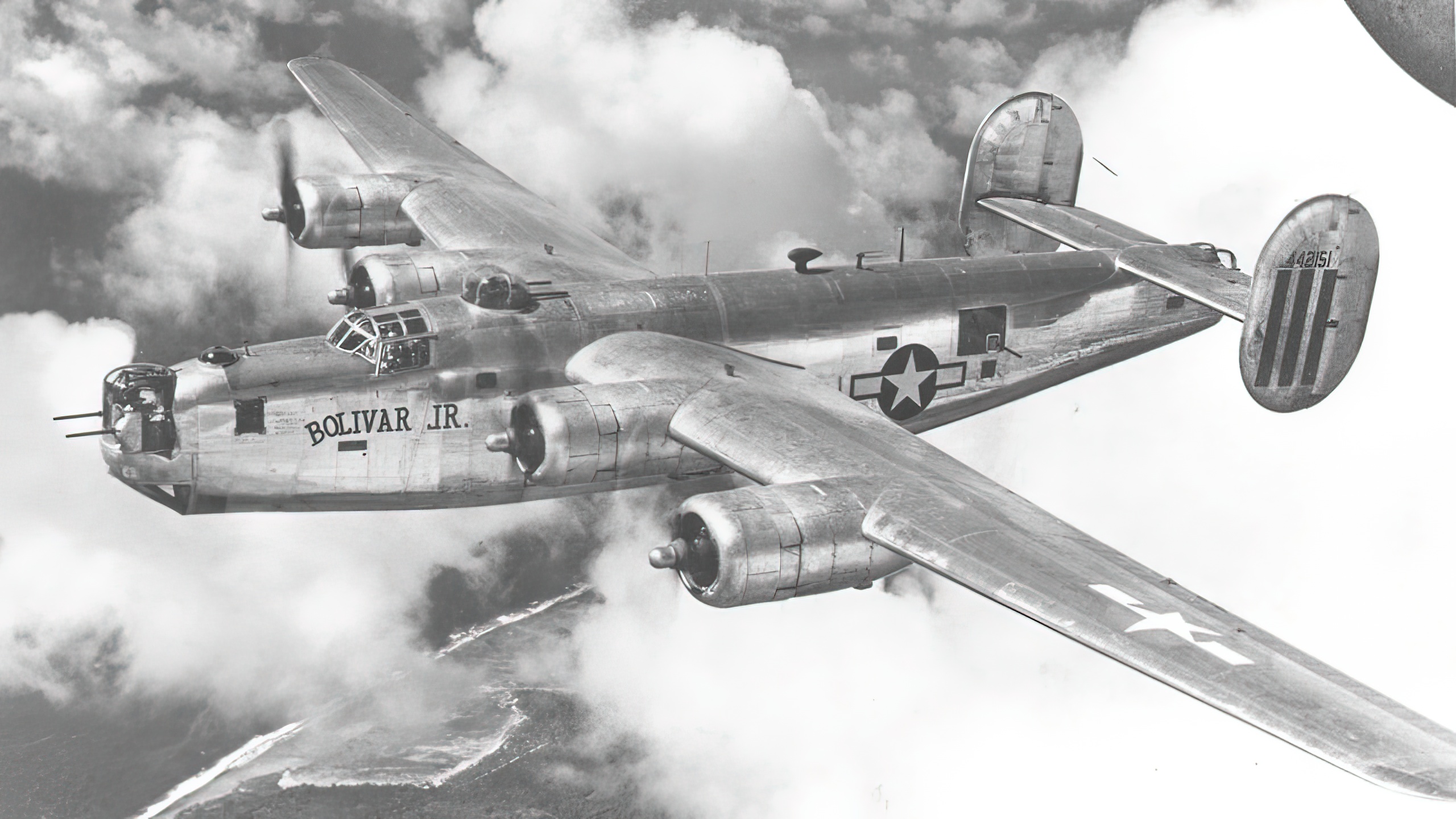 A U.S. Army Air Force Consolidated B-24M-20-CO Liberator (s/n 44-42151) in flight
A U.S. Army Air Force Consolidated B-24M-20-CO Liberator (s/n 44-42151) in flightLong-range naval patrol versions often carried a light defensive armament. Being on long-distance patrols, they generally flew outside the range of enemy fighters. Also, the necessity of range increased the importance of weight and aerodynamic efficiency. Thus naval patrol often omitted top, belly and nose turrets. Some were fitted with a belly pack containing fixed, forward-facing cannon.
In terms of armament, the two bombers were fairly similar. This begs the question, why did the B-17 overshadow the B-24? Some may argue that the sleeker B-17 looked better in photos and propaganda posters, but it’s not just about the looks.
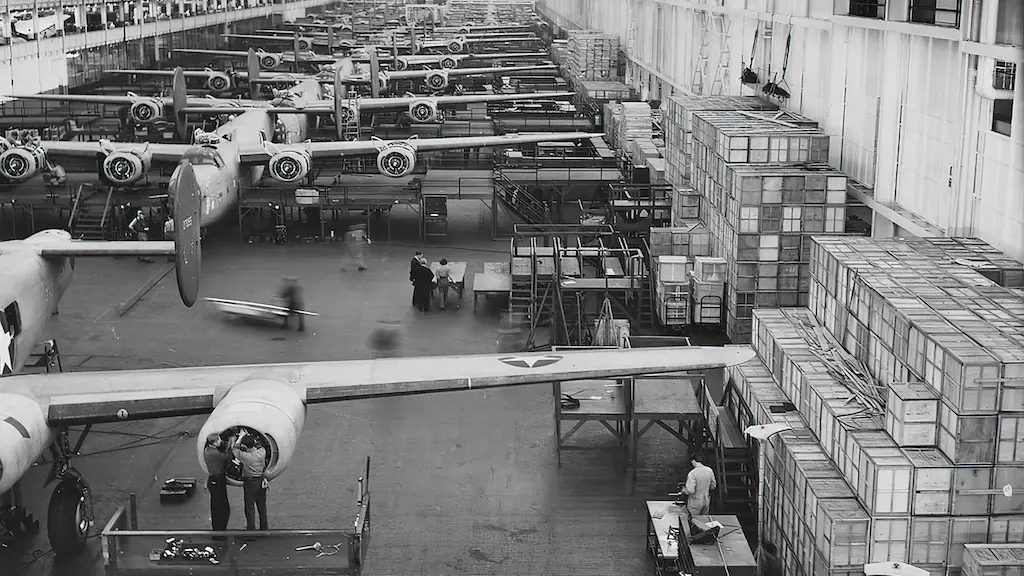 Looking up one of the assembly lines at Ford’s big Willow Run plant, where B-24E (Liberator) bombers are being made 1943
Looking up one of the assembly lines at Ford’s big Willow Run plant, where B-24E (Liberator) bombers are being made 1943Operational limits
With an operational ceiling of 28,000 ft, the Liberator was also more vulnerable to flak than the B-17, with a ceiling of 35,000 ft. Still, the B-24’s bomb load and the longer range proved more valuable, and more B-24’s were built than B-17’s. Additionally, the Liberator was favored as a maritime patrol aircraft and a submarine hunter.
The B-24 had an unfortunate nickname reserved for aircraft with less than desirable durability; a “Flying Coffin”. But this wasn’t entirely fair because, after all, it was being compared to the B-17, which made its name for itself thanks to its durability. Still, admittedly, the Liberator did have a tendency to lose its wings in combat.
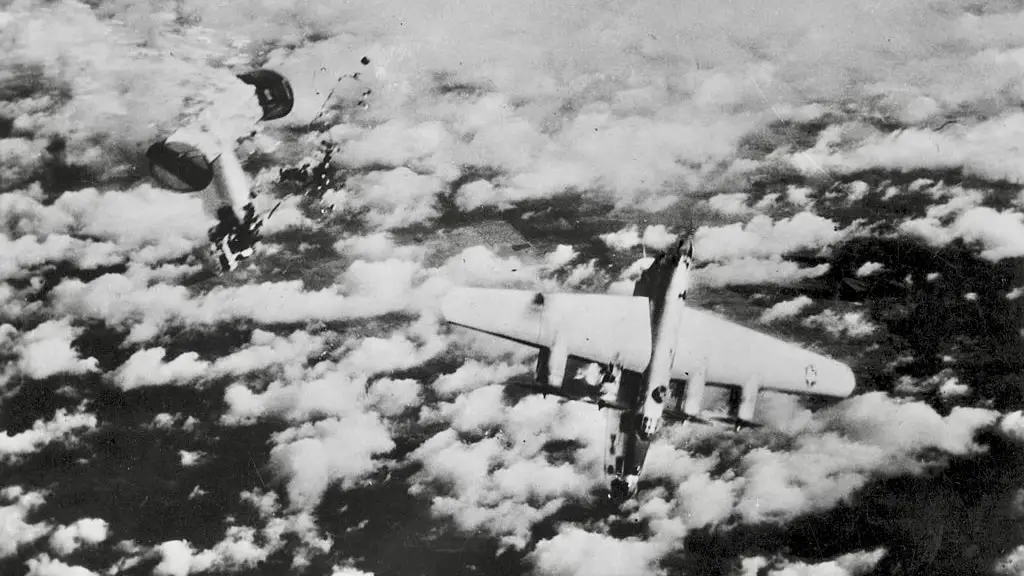 A B-24M of the 448th Bombardment Group, serial number 44-50838, downed by a Messerschmitt Me 262 jet fighter
A B-24M of the 448th Bombardment Group, serial number 44-50838, downed by a Messerschmitt Me 262 jet fighterTowards the end of the war, the liberator had no more room for upgrades. There was also the B-29 ready to replace the B-24. It still served till the end of the war, after which it was retired from Combat use.
